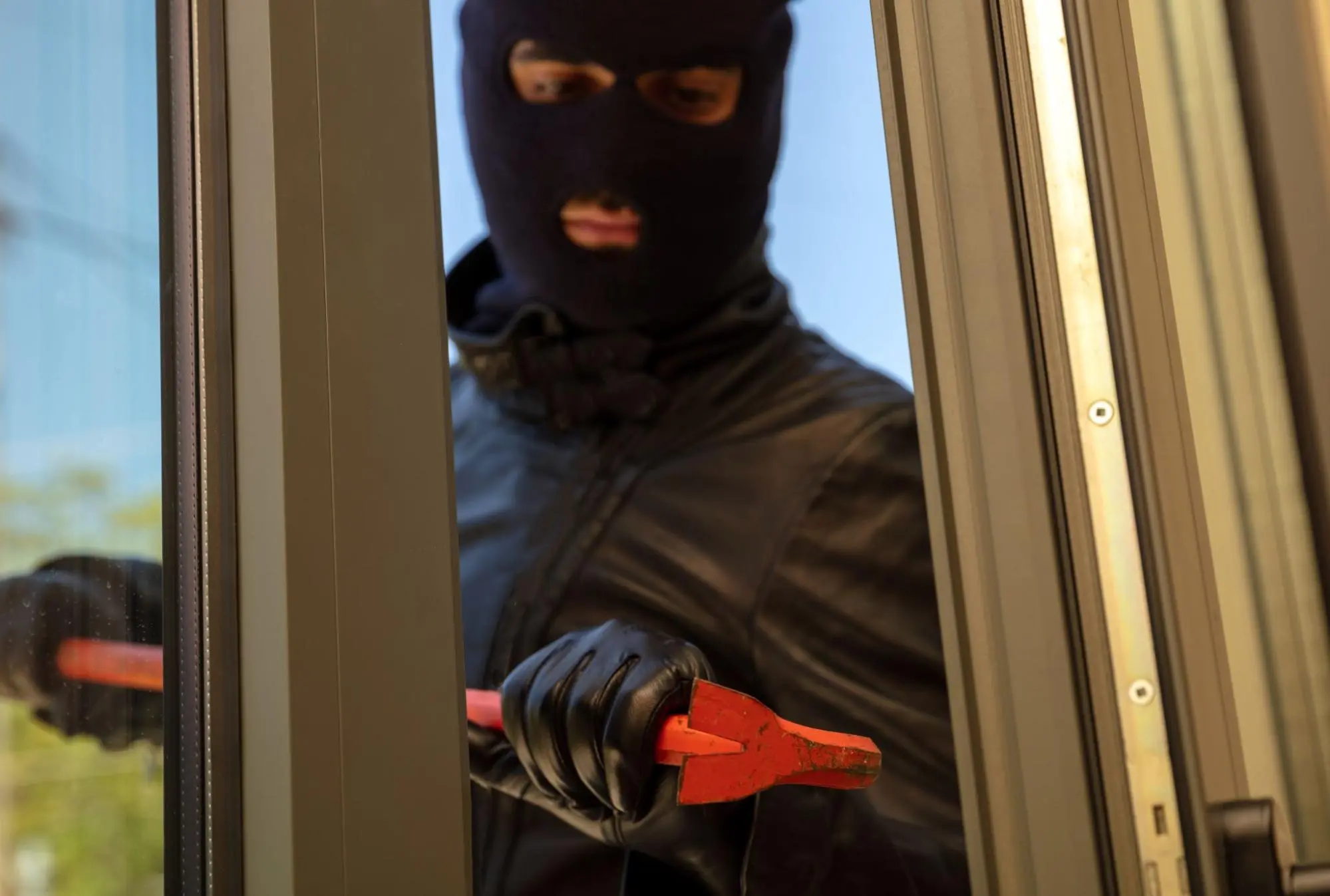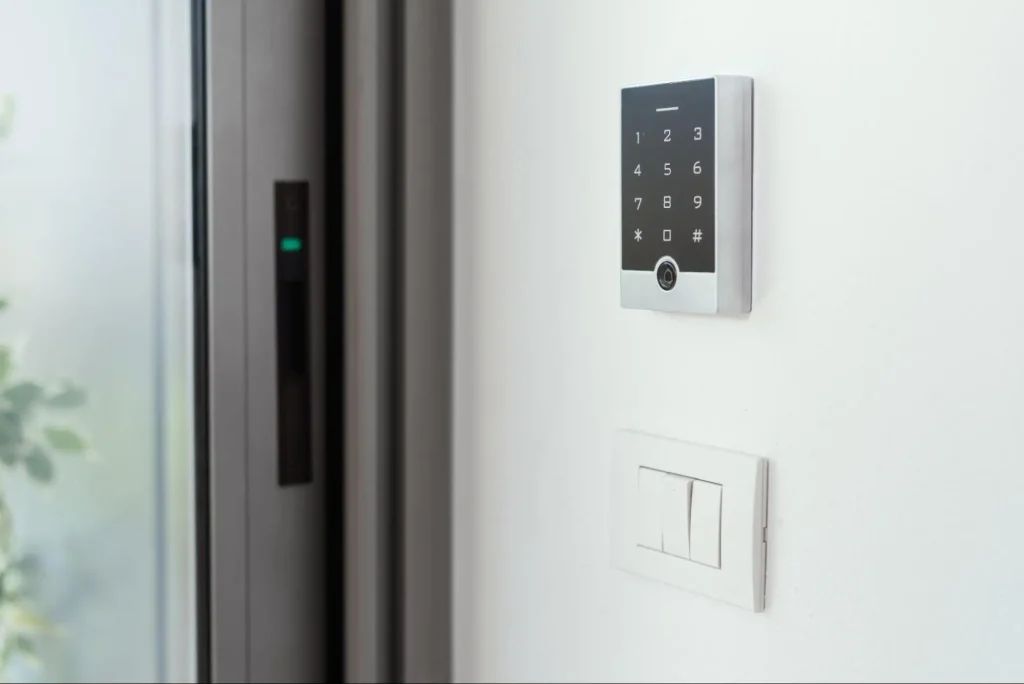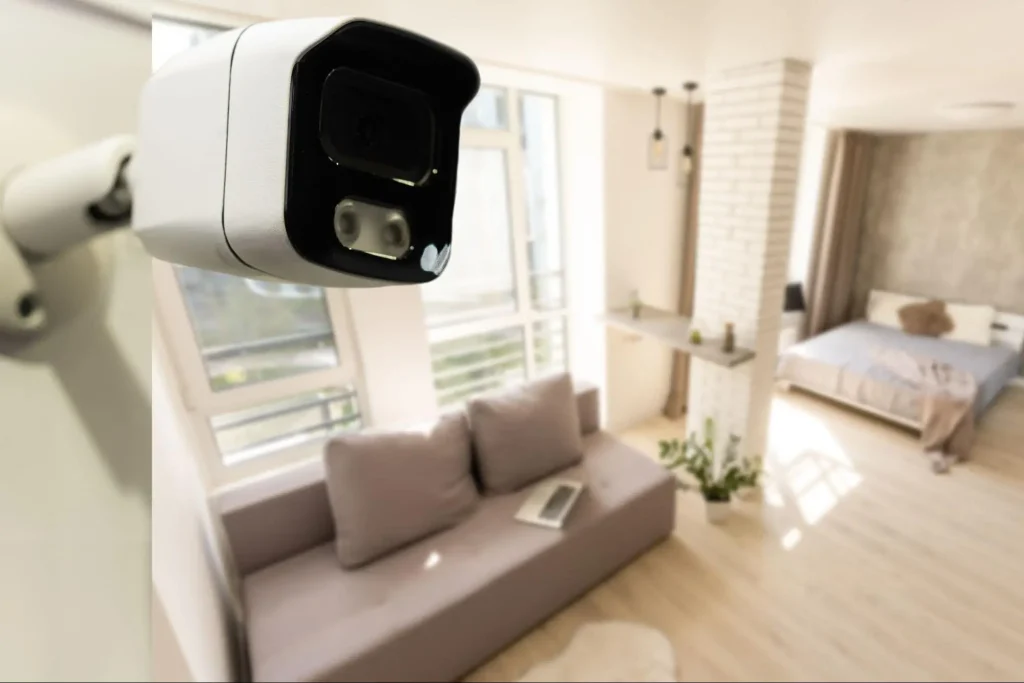
Home security is more important than ever with the rise in residential burglaries across the United States. By taking simple steps to secure your home, you can significantly reduce the risk of break-ins. From installing cameras to using smart locks, many options can help you create a secure environment.
Burglars often seek easy targets, so even basic measures like locking doors and windows can make a difference. You can also invest in advanced systems like two-way audio cameras or security alarms to keep intruders at bay. Modern security systems can alert you immediately if anything suspicious occurs, adding an extra layer of protection.
Don’t forget about maintaining security when you’re away from home. Setting timers for lights, ensuring mail doesn’t pile up, and having neighbors check in can make it look like someone is always at home.

Securing your home starts with knowing your vulnerabilities and ensuring your entry points are properly safeguarded. This involves assessing weak spots at your doors and windows and choosing the best locks and security measures for your home.
Identifying potential weak points in your home’s security is crucial. Start by inspecting doors and windows. Check if they are solid and have strong frames. Ensure that all windows, especially on the ground floor, have functional locks.
Pay special attention to the front door and garage door. These are favorite entry points for burglars. Make sure the front door is made of solid wood or metal and fitted with a peephole or camera. For the garage door, confirm it locks securely and consider adding a secondary lock or reinforcing bar.
High-quality door locks and deadbolts are essential. Ensure that all exterior doors have a deadbolt lock. A deadbolt is harder to break compared to standard door locks. Consider double-cylinder deadbolts for added security, especially on doors with glass panels.
For windows, install locks that can be secured from the inside. Sliding windows can be reinforced with a rod or a security bar to prevent them from being opened from the outside.
A comprehensive security system is also vital. Look for systems that include motion detectors, cameras, and alarms. These help deter burglars and provide peace of mind knowing that every entry point is monitored. Always ensure your security system is activated, even when you’re at home.
Integrating advanced security systems can significantly improve your home’s protection. Key areas include selecting the right system, automating your smart home for security, and setting up surveillance.
When selecting a security system, consider different options like wired and wireless systems. Wireless systems are easier to install and often feature remote control capability. These systems include security cameras, smart locks, motion sensors, and alarm systems. Look for systems offering real-time alerts and mobile app integration..
Integrating smart home automation into your security setup can enhance safety. Smart locks allow you to lock and unlock doors remotely, adding an extra layer of security. Geofencing can automatically arm or disarm your system based on your location, ensuring that your security is always active when needed.
Connect security cameras and doorbell cameras with other smart home devices. This could include lights, smart thermostats, and even smart speakers. By creating routines, such as turning on lights and triggering alarm systems when motion is detected, you can deter potential intruders effectively.
Surveillance cameras play a crucial role in home security. Wireless security cameras offer flexibility in placement and ease of installation. They should cover key areas like entrances, backyards, and blind spots. Home security cameras and video doorbells should have features like night vision, two-way audio, and high-definition recording.
Effective home security involves strategic lighting, safeguarding valuables, and fostering community security. These actions can help deter potential burglars and protect your property.
Keeping your home well-lit is crucial in deterring burglars. Install motion-activated lights around dark areas of your property. This sudden burst of light can surprise and possibly scare off intruders.
Indoor lights on timers give the impression that someone is home. Set these timers to turn on lights during typical evening hours when you are away.
Consider using smart lighting systems that you can control remotely. These systems offer flexibility to adjust lighting based on your schedule and activities, enhancing your security measures.
Always use a safe to store your most valuable items, such as jewelry, important documents, and cash. A safe should be well-hidden and securely bolted to the floor or wall to prevent theft.
Avoid leaving spare keys outside, as burglars know common hiding places. Instead, leave a spare key with a trusted neighbor.
Be cautious about sharing too much information on social media, especially about vacations or expensive purchases. This can reduce the risk of break-ins when you are away.
Having trusted neighbors can significantly improve your home’s security. Participate in neighborhood watch programs and get to know your neighbors. They can help keep an eye on your property when you are not around.
Encourage neighbors to maintain their properties by trimming overgrown trees and bushes. This reduces hiding spots for burglars and enhances visibility.
Consider installing a security mailbox to protect against mail theft. Regular communication about suspicious activities can keep everyone informed and alert.
Creating a culture of awareness and cooperation within your community can greatly reduce the risk of property crime. A vigilant neighborhood is one of the most powerful deterrents against burglaries.

When you’re on vacation, it’s crucial to ensure your home remains secure. Key strategies include locking all entry points, using technology for remote monitoring, and creating the illusion that someone is home.
Before you leave for your vacation, make sure all doors and windows are locked. It’s a simple step but very effective. Don’t forget your garage and any other access points, like fences and gates.
Installing sturdy locks can also make a big difference. High-quality locks on entry doors and windows make it harder for burglars to break in. Consider upgrading to smart locks for even better access control.
Smart lights are another great tool. Setting up lights that turn on and off automatically can make it seem like someone is home, deterring potential thieves.
Guard dogs can offer an added layer of protection. Even if you don’t own a dog, placing signs indicating a dog is on the property can be a deterrent.
Smart home systems can let you monitor and control your home environment remotely. These systems often include features like interior lights that can be turned on or off using your smartphone. This can maintain the illusion that someone is home.
Consider systems that include sirens. Loud noises can quickly drive away someone trying to break in.
Finally, make sure your vacation plans remain private according to Consumer Reports. Don’t advertise on social media that you will be away, as it can be an invitation for burglars.
Protecting your home from break-ins involves several essential steps. Secure your doors and windows by using strong locks, and consider adding deadbolts. Replace hollow-core doors with solid ones to make them harder to kick open.
Install a home security system. Homes without security systems are three times more likely to be broken into. Additionally, security cameras with two-way audio and timely alerts also help.
Burglars often look for easy entry points such as unlocked doors and windows. Ensure all entry points are locked, and consider using additional security like window bars. Common tricks burglars use include entering through these unlocked points.
Incorporate security habits into your routine. Regularly check and update security measures to stay ahead of potential threats.
By following these practices, you can reduce the risk of break-ins and protect your home effectively. For professional assistance, Kaminskiy Care and Repair provides expert advice and handyman services for door and window installation. Contact us today.
Securing your home against break-ins can involve cost-effective measures, improving nighttime security, and strategies for when you’re away. Understanding what deters burglars and knowing affordable options can make a big difference.
Simple actions can make your home less attractive to burglars. For instance, installing security cameras and using strong rods or dowels on sliding doors can significantly enhance security without breaking the bank. Ensure all entry points are well-lit and use timers on lights to make your home appear occupied.
Nighttime security is crucial. Set up motion-sensor lights around your property to deter any unwanted visitors. Ensure that all doors and windows are locked securely before bedtime. Adding sirens to home security devices can also help alert you to any potential intrusions.
When traveling, make your home look occupied. Arrange for someone to collect your mail or use hold services. Set timers on lights and consider leaving a car in the driveway. Inform trusted neighbors of your travel plans so they can keep an eye on your property.